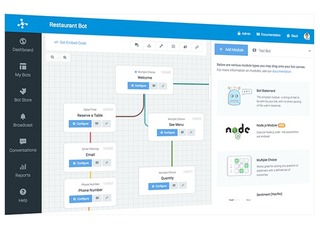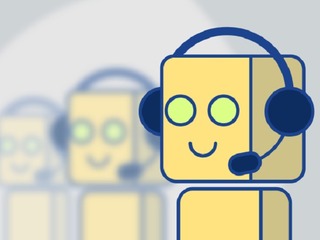DUOS expands AI capabilities to help seniors apply for assistance programs
It will complete and submit forms, and integrate with state benefit systems
Read more...
If 2016 was the year of the chatbot, then 2017 will go down as the year that chatbots went mainstream.
This year, 35.6 million Americans are expected to use a voice-activated virtual assistant device at least once a month, according to eMarketer. That is up 128 percent from last year. In addition, nearly twice as many Americans are using assistants on their mobile device at least once a month. With 60.5 million Americans using a virtual assistant at least once a month, that's roughly 19 percent of the population.
As a result of this increased interest (or maybe it's the other way around), we've seen numerous companies make bots a big part of their strategies. That includes Google and Amazon, both of which have launched their own smart speakers and Assistants, as well as Facebook, which has leveraged its popular Messenger app to allow its users to get better customer service.
Twitter is no exception, having also started getting in on the chatbot space last year as well, launching chatbots on Direct Messenger.
In April of this year, the company unveiled its Account Activity API, essentially as a way to make it easier for developers to build applications on the Twitter platform, and, on Tuesday, Twitter announced that it is taking the API's Direct Message features out of beta.
With this news, developers will now be able to build solutions with features that include quick replies, welcome messages, buttons on messages, custom profiles and Customer Feedback Cards. Developers will be able to edit their welcome messages, as well use read receipts to let customers know that their messages have been received.
During the beta period, these features were "used to create responses and more engaging experiences," the company said, meaning, among other things, customer service chatbots.
Some of the companies that have already used these features to create their own chatbots over the last year include Samsung, MTV, TBS, Wendy’s, and Patrón.
The other big piece of news is that Twitter is launching an enterprise version of the Account Activity API.
While the standard version delivers activities for up to 35 accounts, the enterprise version of the API "is designed for those who need data for a large number of accounts, multiple webhook URLs, reliability features such as retries, or managed support," the company wrote.
With the additional data provided by the enterprise version of the API, along with the Direct Message features, Twitter is making it easier for even more businesses to build chatbots on the platform.
"We see a huge opportunity for businesses to harness the power of Twitter in all aspects of their operations, from responding to customer needs and creating delightful customer experiences, to identifying emerging trends, making better products, and more. Supporting developers who are building to address unique business needs will ultimately lead to a better experience for everyone on Twitter," Dan Jackson, a spokesperson for Twitter, told VatorNews.
"As we noted in our most recent shareholder letter, our data and enterprise solutions business is our fastest-growing product area, with three consecutive quarters of accelerating growth. We expect it to continue to be an increasingly important contributor to revenue growth and overall profitability for Twitter."
Twitter versus developers
If the Account Activity API seems like a gift for developers, to give them better features and more insights, that's because that's exactly what it is.
"Twitter’s API platform enables a robust ecosystem of developers and innovators to build solutions using public Twitter data that serve a wide range of needs," the company wrote in a blog post in April.
"We’re also launching new APIs and endpoints that enable developers to build on the unique attributes of Twitter to create better experiences for businesses. Developers can see where we’re focusing and what we’re building with our newly-published API platform roadmap."
The relationship between Twitter and the developer community has been rocky, to say the least, ever since the company released its updated API in 2012, which put a multitude of restrictions on third-party developers, and limited their access to new users. As a result, a slew of third party apps were forced to shut down.
That lasted until Jack Dorsey returned to become CEO in 2015. He swiftly reversed course and apologized to developers, asking them to come back to the platform.
“We want to come to you today and apologize for the confusion. We want to reset our relationship and make sure that we’re learning, listening, and that we are rebooting. That’s what today represents. We want to make sure that we have an open, honest, and transparent relationship with developers," he said.
Part of Dorsey's outreach included encouraging developers to open a dialogue with the company via a new hashtag, #HelloWorld, so that developers could tell Twitter directly what they wanted to see happen. There were 5,746 Tweets sent out in just the first three days.
With tools like the Account Activity API, the relationship between Twitter and the developer community looks to have finally healed for good.
(Image source: regmedia.co.uk)
It will complete and submit forms, and integrate with state benefit systems
Read more...The bill would require a report on how these industries use AI to valuate homes and underwrite loans
Read more...The artists wrote an open letter accusing OpenAI of misleading and using them
Read more...


